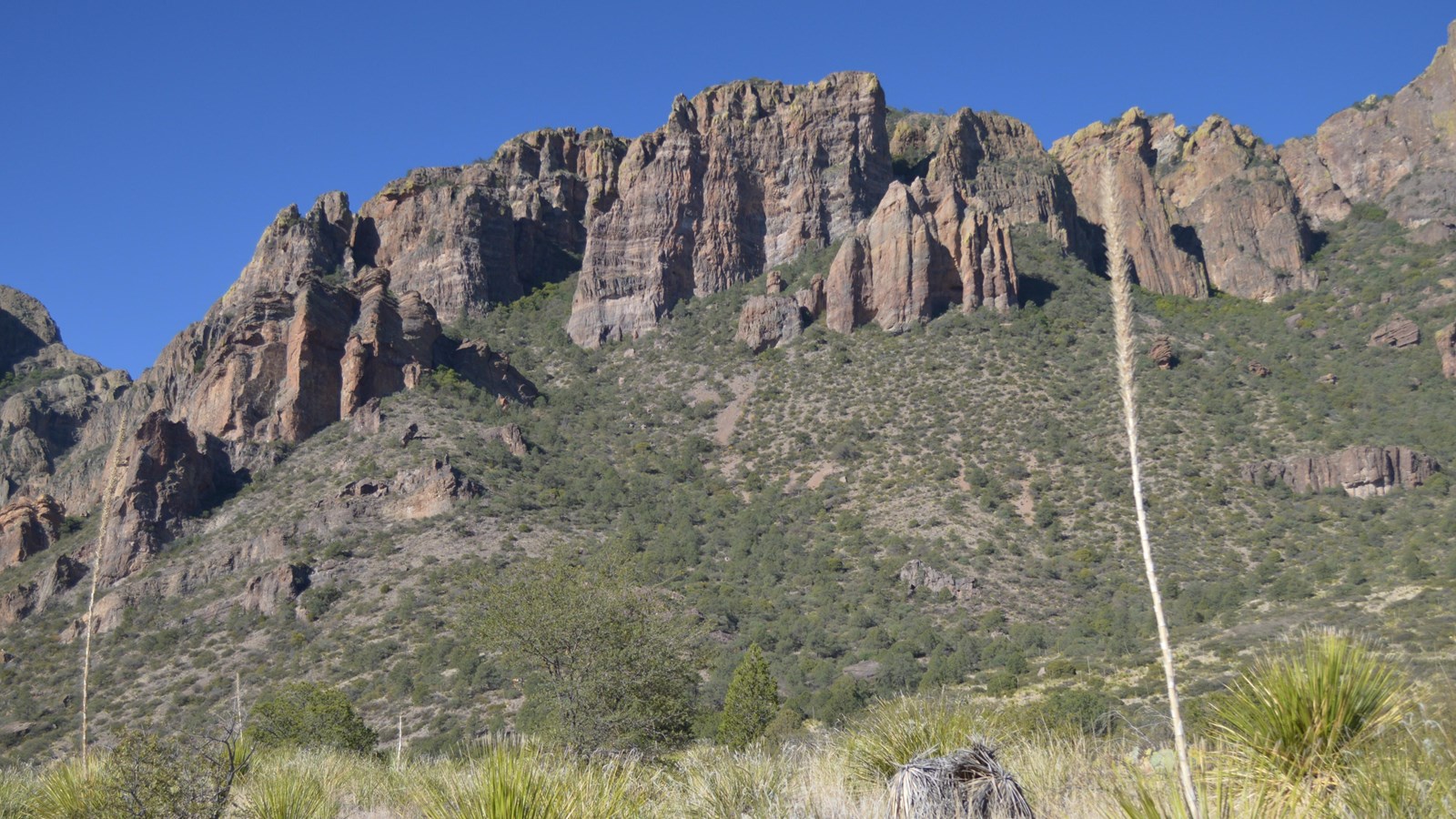Last updated: April 5, 2021
Place
Pine Canyon Trail

NPS
Scenic View/Photo Spot, Trailhead
Trail Information
Roundtrip Distance: 4 miles
Elevation change: 1000 feet
Average hiking time: 3 hours
Dogs and other pets are not allowed on any trails in the park.
Pine Canyon provides access to a remote woodland canyon, densely vegetated with oaks, junipers, maples, and Arizona Pine. The trail begins in open sotol grassland and steadily climbs for 2 miles into the canyon. The last 1/2 mile climbs steeply and ends at the base of a high cliff pouroff. During the summer rainy season, the pouroff may become a temporary waterfall. Black bears are regularly observed along this trail. Never approach bears or leave any food unattended. Know how to be bear safe in Big Bend.
The woodland is a sensitive area with many specialized plants, so camping is not allowed in this special place. Day use only.
Don't be deceived by the trail name. This is an uphill, open desert hike with some shade at the very end. Be sure to hike this trail with plenty of water and protective clothing. It is best explored early in the day before the heat of the afternoon. Black bears are regularly observed in the woodland canyon.
Accessibility
to reach this trail, you must first travel 6.4 miles along the unimproved Glenn Springs and Pine Canyon Roads. A high-clearance vehicle is required to reach this trail.
From the trailhead, this trail steadily climbs through open desert and sotol grassland for 1.5 miles. The high canyon walls offer views of fascinating volcanic geology. The last 1/2 mile passes through an oak/pine woodland, and steeply climbs to the base of a 100' cliff. The trail surface is rocky and uneven.
Hike Smart
Bring plenty of water!
Carry 1 liter of water per person per hour that you plan to hike. The importance of carrying enough water in this hot, dry climate cannot be overstated!
Eat
Your body needs food for energy and salts and electrolytes to replace what it's losing from perspiration. The dry climate at Big Bend means that sweat often evaporates almost instantly; your body is likely losing lots of moisture and salts without you even realizing it. Eat plenty of salty snacks to keep your body's salt-to-water ratio in balance.
Sun protection
Carry sunscreen and use it liberally. Hats are also strongly recommended. It may seem strange to wear long-sleeved shirts and pants in hot weather, but many hikers choose lightweight, breathable clothing which covers their arms and legs to protect themselves from the sun.
Don't leave people behind
If you're hiking in a group, make sure the person in the back always has someone to help.
Be aware of wildlife
Keep an eye out for snakes, and remember to maintain a safe distance between yourself and all wildlife. Animals in the park are wild and should never be approached, harassed, or fed.
